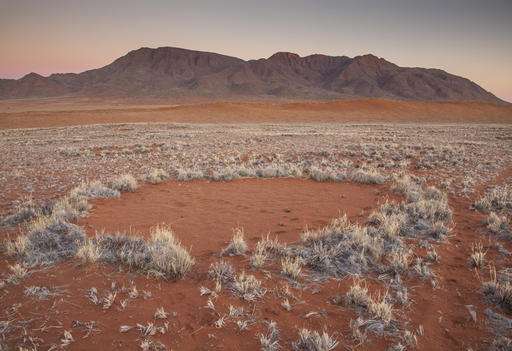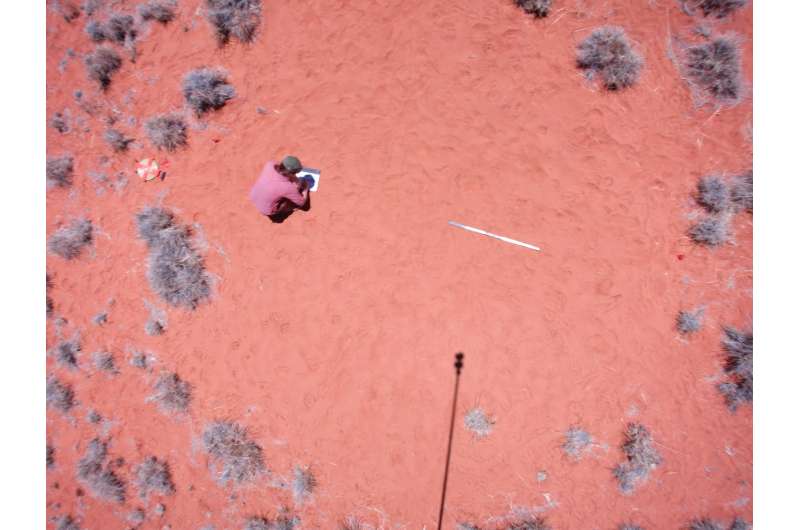Finally, an explanation of strange African 'fairy circles'?

The forces behind the mysterious "fairy circles" that dot a desert in southern Africa do not appear to be supernatural, but they are intricate and complex.
The formations are circles of land dozens of feet wide that create a stunning pattern in the Namib desert and have mystified locals and scientists for ages. Inside the circles it looks like nothing is growing, while plants grow well on the land surrounding them. Similar patterns have also been seen in Australia.
Paranormal powers like fairies and even dragon breath have been credited with creating them. But Princeton University ecologists have come up with a much less shadowy—and maybe less charming—explanation for what's afoot. Using computer simulations, they say an intricate combination of animals and plants cooperating and competing help explain the unusual patterns, according to a study in the journal Nature Wednesday.
Corina Tarnita, the study's lead author, calls it "simple and elegant geometry on such enormous scale."
Until this study, there were two competing explanations: Termites created the pattern or plants surrounding the circles did it. Tarnita's theory borrows from both. The giant circles—from six to 100 feet in diameter—are mostly from termites that cooperate with others in their colony, but compete against other colonies, she said. The unusual patterns seen between circles are plants that establish an orderly root system so they don't compete too much for limited water.

"Out of all these processes, where each is doing what they need to, emerges this large scale pattern," Tarnita said.
It's not quite a conspiracy, says co-author Robert Pringle, because the creatures aren't trying to make the patterns. "There's no master plan, there's no kind of blueprint for what's supposed to emerge," he said.
Several outside experts contacted by The Associated Press weren't convinced by the study, because they weren't comfortable with the author's assumptions about rainfall and especially termite colony lifespans.
They did not, however, argue that it was fairies at work.
More information: Corina E. Tarnita et al. A theoretical foundation for multi-scale regular vegetation patterns, Nature (2017). DOI: 10.1038/nature20801
Journal information: Nature
© 2017 The Associated Press. All rights reserved.



















